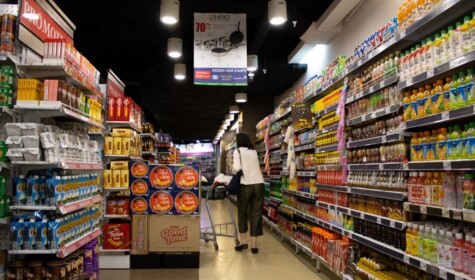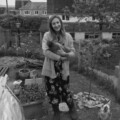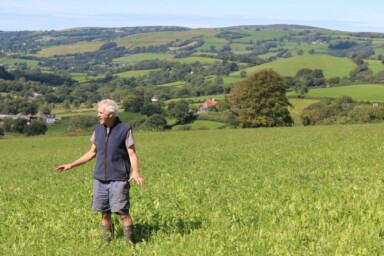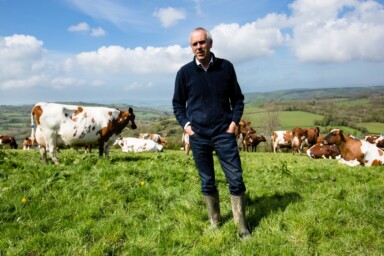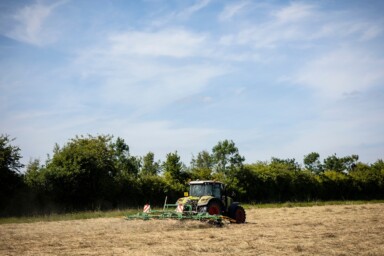‘Only when the last tree has been cut down, the last fish been caught, and the last stream poisoned, will we realize we cannot eat money.’
― Cree Indian Prophecy
I’ll admit, money has never made a huge amount of sense to me. I’ll also admit, this is a horribly hypocritical thing of me to say, as I sit in my comfortable house typing this article on a laptop. I know it’s very easy for me to speak negatively about money when I’m lucky enough to have it in sufficient quantities to afford security and luxuries.
But the fact that the functioning of our species has become dictated by something that for all intents and purposes isn’t real, to the detriment of all the things in the world that are real and that we actually need to survive, simply boggles my mind.
Money isn’t a real thing. It may have a physical existence in the form of a coin or a note or a number on a screen, but it is simply a representation of the goods we can exchange it for. And yet we behave as though we value it more than the goods themselves.
An emphasis on the growth of wealth (economic growth), measured solely in units of this abstract token, is driving the destruction of the natural world. ‘We are in the beginning of mass extinction, and all you can talk about is money and fairy tales of eternal economic growth,’ said Greta Thunberg at the 2019 United Nations Climate Action Summit. Scientists have long recognised the link between economic growth and environmental degradation, and some argue that a global economic system dependent on growth is the ultimate cause of the environmental crisis.
Making a profit – making more of this abstract entity – is more important to us than conserving the things it allows us to purchase. An example of this irrationality that many of us have experienced in our everyday lives, perhaps without realising it, is loss leader pricing. This is a marketing strategy used primarily by supermarkets where products are advertised and sold at below their cost price (a loss), in order to bring in (lead) customers, with the assumption that once inside the shop they will buy other products and the loss will be more than offset by more profitable items. This strategy is particularly important for major supermarkets which are constantly engaged in ‘price wars’ with each other, each competing to lure consumers away from the doors of other stores and through their own, to increase profits.
Items usually targeted by supermarkets as loss leaders are staples that most people consume, and therefore buy on a regular basis, such as bread and milk.
Loss leader pricing led to public outcry in the 2015 dairy crisis, where supermarkets were selling milk cheaper than water. Currently, some supermarkets have pledges on their website that farmers are receiving a fair price for their milk, and yet all of the UK’s major supermarkets are selling milk for as low as 45 pence per litre, a price that has to cover in the cost of bottling, labelling and distribution as well as production. There has been nothing put in place by the government to end the practice of supermarkets using milk (and other items) as loss leaders, despite calls at the time of the 2015 crisis.
Dairy farmers largely continue to be paid less than the cost of production. The cost of milk production varies between different farms, but the average cost for the 50% of farms in the middle of this range was between 30.2-33.0 pence per litre, depending on the calving interval, in 2018/2019 (the latest published figures). In January 2020, the average price paid to farmers for milk was 29.15 pence per litre. By April 2020, this farmgate price had decreased to 27.60 pence per litre, due to the impact of the COVID-19 pandemic, as the food service sector closed down and so demand for milk in these outlets dropped. Several dairy processors reacted to this market disruption by reduction of milk prices. Dairy farmers are therefore facing another crisis, with around a quarter of farms reported to be currently unviable, and some arguing that the situation is worse than that of 2015.
The way most dairy farms are able to survive the low farmgate prices is to rely on economies of scale: getting bigger and intensifying, producing more outputs for less inputs. This comes at the cost of animal welfare. Larger herd sizes have led to a shift away from treating animals as individuals. Continuously housed cattle in intensive systems have higher levels of lameness, hoof pathologies, hock lesions, uterine disease and mastitis than those in pasture-based systems, and they are denied the ability to express natural grazing, resting and social behaviours. In addition, there are the environmental costs of intensive production, with increasingly or entirely indoor housed cattle producing vast amounts of slurry, emitting more greenhouse gases and ammonia than cows grazing naturally, and polluting waterways. Housed cows also need more high protein feeds such as soya, the production which is associated with deforestation elsewhere in the world, destroying important habitat for wildlife and contributing to climate change.
Dairy farmers are also reliant on subsidies to make up for the difference between production cost and farmgate price. These subsidies are funded by the taxpayer.
Buying milk at loss leader prices may seem like a good deal for consumers, but they are paying for it elsewhere. As Deborah Ross at The Times put it, ‘No, you’re not being asked to drop off a tenner at Morrisons every now and then (“Here you are. To help with the milk.”), but you might as well be… as is always the way with food getting even cheaper, you can be sure you’re paying for it somewhere down the line.’
And consumers do eventually pay more for cheap food – research has shown that the price tag of cheap food is effectively doubled further down the line. For every £1 that UK consumers spend on food, they spend an extra £1 on the ‘hidden costs’ associated with cheaply-priced food, because of the damage it causes to the environment and human health. These hidden costs are in the form of taxes for farm support payments and mitigating climate change and ecological degradation associated with unsustainable production systems, and lost income due to ill health caused by nutritionally-poor ‘cheap’ food. Not so cheap, after all.
Thus, dishonestly priced food, driven by corporate profits, is leading to environmental devastation, and accelerating the climate and ecological crises. Money doesn’t make the world go around: it threatens it with destruction. ‘Cheap’ food is actually costing us the Earth.
Let’s stop worshipping at the altar of money and instead value the things we really need in life. Nutritious food, clean air and water, thriving ecosystems flourishing with flora and fauna, all nourishing our physical and mental health. Money is obviously still a useful construct, if it is used as a means to achieve those ends, for example through fairly-priced produce, and assigning payments to ecological services. Aristotle had it right when he philosophised that the exchange of money is great if it is a means to acquiring the important things in life, but bad when money is pursued for its own sake. I think he’d be pretty miffed if he saw the situation we’ve got ourselves into, almost two and a half thousand years later.
